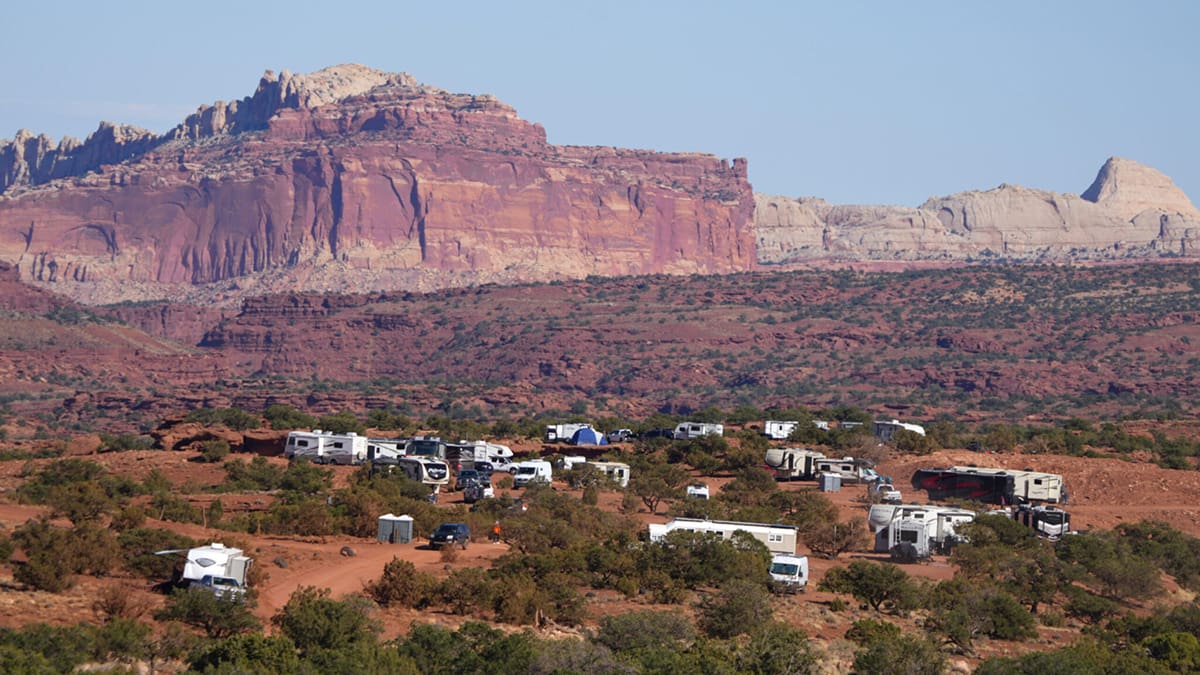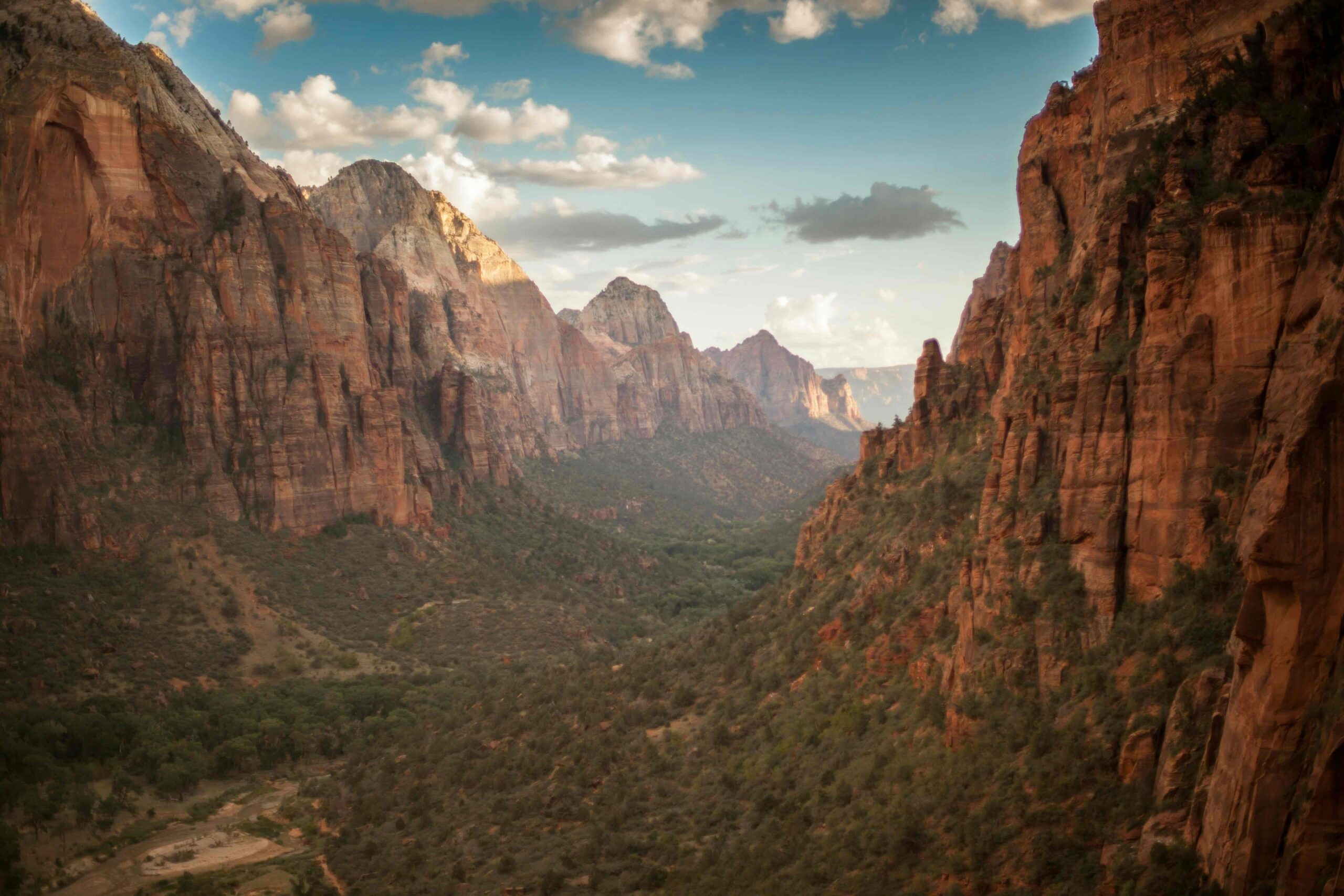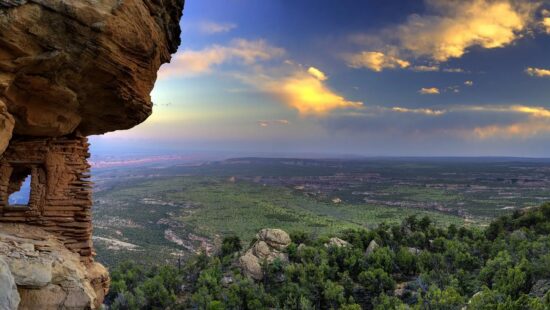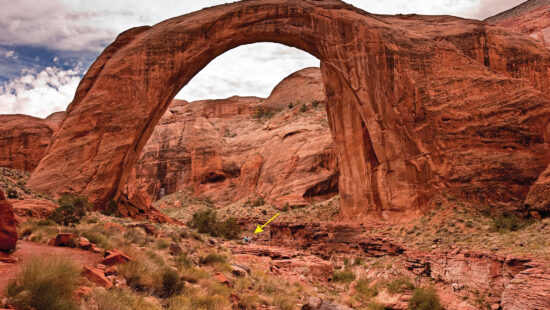Environment
EPA proposes new deadline to review Utah’s plan to combat regional haze in national parks

People camp on public lands on Oct. 13, 2023 just outside Capitol Reef National Park, Utah. Capitol Reef is the national park most affected by Utah's biggest regional haze polluters. Photo: George Frey/Getty Images
Environmental groups, the state and PacifiCorp filed different lawsuits against the EPA’s delay
Utah’s coal-fired Hunter power plant is No. 1 in the country for contributing to haze in large national parks and national wilderness areas. The nearby Huntington plant ranks 12, according to a Sierra Club database. However, a state plan to combat haze pollution hasn’t been reviewed by the Environmental Protection Agency since it was deemed complete in 2022.
But that may change this year, as a result of a settlement with environmentalists.
The EPA missed its 2023 deadline to take final action on Utah’s implementation plan to protect its national parks from visibility impairment from man-made air pollution. But, following a lawsuit from the Sierra Club and the National Parks Conservation Association, the agency has proposed a settlement to make a final evaluation of Utah’s strategy this fall.
Under the Clean Air Act, states should implement a plan to protect their national parks and wilderness areas from haze. That rule has, however, seen a lack of enforcement, according to the lawsuit.
Environmentalists argue that haze is an issue in 98% of national parks across the country and states such as Utah, Wyoming and North Dakota “have produced do-nothing plans” to avoid certain pollution controls on coal-fired power plants or have legally fought the rule’s requirements, according to the Sierra Club.
“This settlement is a step forward for communities who have already waited years for action on smog and particulate matter pollution that harms lung function, worsens asthma attacks, and puts sensitive groups at extreme risk,” Laurie Williams, Sierra Club’s beyond coal director, said in a statement. “Now, every deadline in this settlement helps ensure EPA follows the laws established by Congress, disapproves of do-nothing plans, and restores clean air to national parks and communities across the country.”
Now, the EPA has proposed deadlines to approve, disapprove, partially or conditionally approve plans from 33 states to reduce haze pollution in national parks and wilderness areas, according to a proposed consent decree posted to the Federal Register in March.
As the EPA missed Utah’s deadline in August 2023, it must sign a final notice in November 2024, as part of the settlement.
If the EPA rejects the state plan, the federal agency must issue its own implementation plan describing how the state should address haze pollution, as the Clean Air Act mandates.
However, environmentalists are not the only ones who challenged the EPA because of its delay. Utah also sued the EPA in 2023, asking the agency to issue a final decision on its implementation plan.
The Utah Division of Environmental Quality imposed new control measures, such as a plant-wide enforceable mass-based nitrogen oxide limit on PacifiCorp’s Hunter and Huntington Power Plants, according to the suit. The DEQ also proposed the installation of flue gas recirculation on the Riley Boiler at the US Magnesium’s Rowley Plant and a closure date for some units at the Intermountain Generation Station, among other measures.
Though the Utah Air Quality Board adopted the plan in 2022, the regulated sources can’t plan compliance with the new requirements without the EPA’s final nod, according to the document.
“The Administrator’s delay leaves uncertainty about control requirements that may apply to various sources if the Administrator disapproves Utah’s SIP (state implementation plan) and imposes a federal implementation plan that requires different controls,” the legal challenge reads. The holdup also creates confusion in implementing Clean Air Act requirements and difficulty complying with overlapping requirements, the state argued.
PacifiCorp filed an additional suit with similar claims after Utah’s challenge.
However, according to Natalie Levine, interim campaigns director at the National Parks Conservation Association, those plans that Utah is fighting to implement on time may not be sufficient to combat the haze.
“At least NPCA’s opinion is that those three states (Utah, Wyoming and North Dakota) propose plans that will do nothing to get us to that natural visibility in our parks and wilderness areas in these three states, in the next 10 years of the program,” Levine said at a virtual meeting on Tuesday. She also encouraged people to submit public comments to the EPA to express their opinion on the regional haze plans.
The Sierra Club, for example, is asking for pollution controls on the largest polluting sources, such as coal plants, as well the inclusion of a broader range of large sources that have been left out of the state plan, such as concrete or oil and gas production facilities, said Lindsay Beebe, a Sierra Club lobbying and advocacy representative, at the Tuesday virtual meeting.
According to the Sierra Club’s Beyond Coal Campaign database, which takes into account electric generating units that “lack firm plans to retire prior to 2031,” Capitol Reef National Park is the most affected area by both the Hunter and Huntington plants — located in Emery County — which “lack modern, industry-standard haze controls.”
The next most impacted national parks are Canyonlands and Arches.
“The pollutants that cause visibility impairment are the same pollutants that cause respiratory illness and heart disease,” Beebe said. “When we cut pollutants for visibility, it’s the same pollutants that we’re talking about for public health.”



















